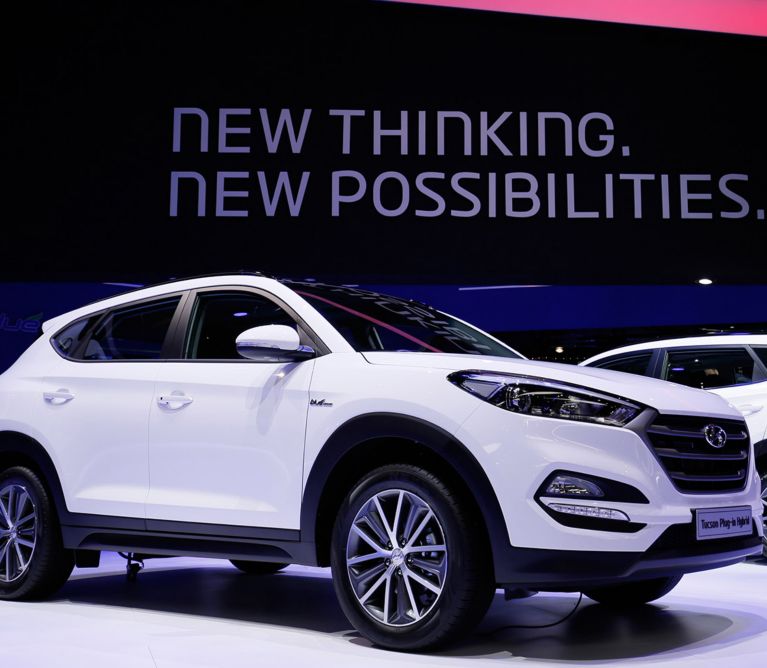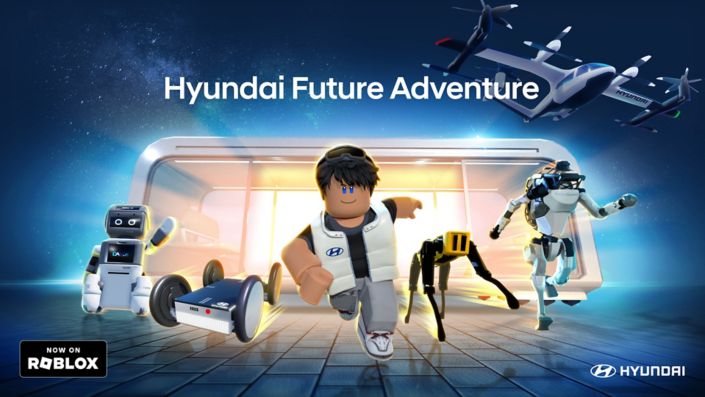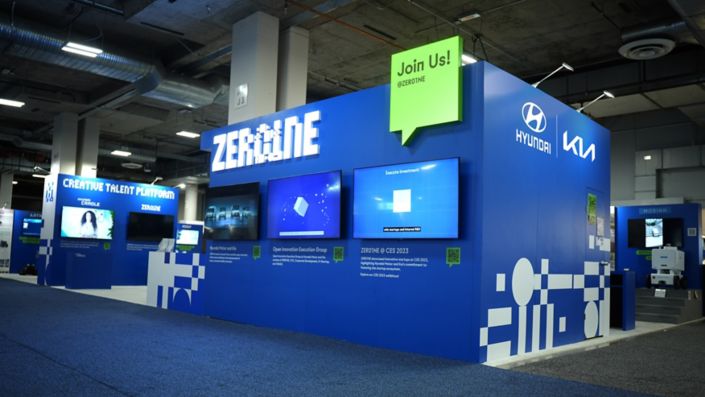- All-New Tucson 48V Hybrid Concept shows smart efficiency improvements
- All-New Tucson Plug-in-Hybrid Concept to emit less than 48 g/km CO2
- Hyundai displays innovative connectivity features including wearable and gesture control technologies
Press material
Hyundai Motor showcases a wide range of innovative fuel efficiency and connectivity technologies at the 2015 Geneva Motor Show.
While two fuel efficiency concepts underline Hyundai’s capabilities in advanced drivetrain technologies, the connectivity cockpit concept and wearables on display grant a view of how controlling and interacting with Hyundai vehicles could look in the future.
All-New Tucson 48V Hybrid Concept
Based on the All-New Tucson platform, the 48V Hybrid technology is a smart and cost efficient way to cut fuel consumption and CO2 emissions significantly. Compared to a full hybrid system, the 48V system delivers similar efficiency, for only a quarter of the cost and is just another example of Hyundai’s engineering capabilities under the premise of ‘New Thinking, New Possibilities’.
Based on a 2.0-litre diesel model with 136 PS and six-speed manual transmission, the show car promises to boost power by 10 %, while emitting only 109 g/km CO2 emissions. The 48V Hybrid Concept delivers a lively performance as the combined power pack (136 PS gasoline engine plus a 14 PS electric motor) generates 150 PS and 413 Nm of torque.
Especially suited to fitment in larger cars and SUVs, the show car’s 48V Hybrid technology comprises a Hybrid Starter Generator (HSG) – an electric motor replacing the conventional starter - an inverter and a low voltage DC/DC converter. The HSG supports the diesel engine with its additional output, enables the ISG to restart the engine with almost no noise or vibration and acts as a generator during deceleration, recharging the 48-volt lithium-ion battery. The new hybrid system adds a modest 20 kg to the vehicle weight.
All-New Tucson Plug-in-Hybrid Concept
Hyundai’s concept of a plug-in-hybrid vehicle (PHEV), also based on the All-New Tucson platform, is equipped with a 1.7-litre diesel engine and a seven-speed dual-clutch transmission, both available in the All-New Tucson line-up. The engine generates 115 PS and is accompanied by a 68 PS electric motor and a 10,7 kWh lithium-ion polymer battery, which enables the car to drive in pure-electric mode for more than 50 km. The combined engine has a maximum combined power of 183 PS and delivers an impressive 474 Nm torque. Hyundai engineers estimate CO2 emissions of less than 48 g/km while the vehicle’s performance capabilities could be increased significantly.
The electric motor is placed at the rear of the car and drives the rear axle, whereas the diesel engine drives the front axle. This setup enables the car to switch between rear-wheel drive, front-wheel drive and all-wheel drive depending on the driving situation.
For greater driver engagement and choice, the PHEV concept is equipped with a 4-mode drive selection. The ‘Auto’ mode operates all systems for highest fuel efficiency. The ‘Zero Emission Vehicle’ (ZEV) mode uses only the electric motor - if the battery charge level is sufficient. This mode is particularly useful when leaving the house quietly in the morning or when driving in low-speed city traffic. In ‘4WD’ mode both engines operate to enable all-wheel drive functionality, while in ‘Sport’ the performance characteristics of both engines are prioritised.

Innovative connectivity features
Hyundai is continually exploring new ways to improve the vehicle ownership experience for its customers. The Connectivity Cockpit Concept holds a collection of new advanced technologies including wearable devices, integration of car generated data, rear seat child care and 3D-gesture controls. These assets offer an insight to Hyundai’s new ways of thinking to provide customers with value beyond expectations, and setting out ways they could control and interact with its vehicles in the future.
A wearable device like a smartwatch, paired with the in-car-system, can monitor the driver’s status (heart rate and alertness), recommending rest periods to promote safe driving. It can also inform the driver about blind-spots, alert him or her to appropriate following distances, and provide navigation-details.
Also on display is Hyundai’s content connectivity feature, which provides a calendar ‘life-log’ of daily driving activities, delivering integrated information from vehicle, cloud, tablet, smartphone and wearable devices. It can display POI suggestions by ranking driver preferences, while also listing petrol stations near the user’s route.

The rear seat child care function uses innovative tablet features to monitor passengers and children via a mini-camera and the head unit screen on the center stack.
The system also has tablet-based ‘co-pilot/navigator’ controls, which allow a passenger to interact with vehicle infotainment and comfort features, such as air-conditioning, while the driver’s eyes remain on the road.
A fourth area of focus for the Geneva display is the company’s 3D hand-gesture controls, showcased in the Connectivity Cockpit Concept. The innovative system employs infrared and camera sensors to recognise driver’s hand commands to select navigation, infotainment, audio, air conditioning and even smartphone connectivity functions. While driving, only basic commands will be available, whereas when at standstill and neutral mode, the full range of functions will be accessible. This intuitive gesture interface provides the driver with a host of controls, while keeping his or her eyes on the road, and demonstrates clearly Hyundai’s future vision for human / machine interface.
The system also has tablet-based ‘co-pilot/navigator’ controls, which allow a passenger to interact with vehicle infotainment and comfort features, such as air-conditioning, while the driver’s eyes remain on the road.
A fourth area of focus for the Geneva display is the company’s 3D hand-gesture controls, showcased in the Connectivity Cockpit Concept. The innovative system employs infrared and camera sensors to recognise driver’s hand commands to select navigation, infotainment, audio, air conditioning and even smartphone connectivity functions. While driving, only basic commands will be available, whereas when at standstill and neutral mode, the full range of functions will be accessible. This intuitive gesture interface provides the driver with a host of controls, while keeping his or her eyes on the road, and demonstrates clearly Hyundai’s future vision for human / machine interface.











